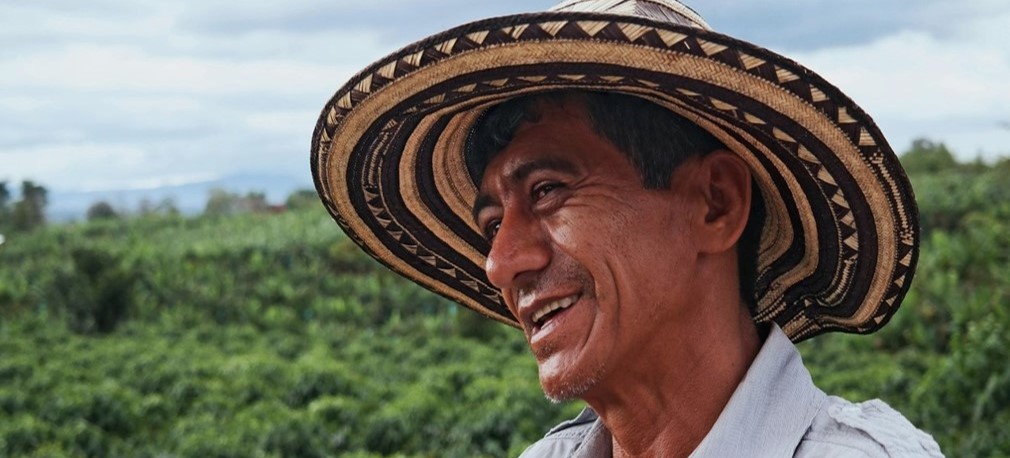
The results from four years of financing some of the most innovative sustainability work across Latin America are in.
The IDB’s Platform for Sustainable Agriculture, Food, and Environment, or SAFE, is proving how development funders can drive new levels of collective learning that were previously not possible. How? By emphasizing innovation and making efficient use of Monitoring, Evaluation, and Learning (MEL) resources.
What makes the SAFE approach unique among sustainability platforms, in a nutshell, is its ability to draw learning from pioneering projects based on novel unified performance monitoring, and to further turn that data into practical insights for all members of the Platform.
Coordinated by Hivos, and supported by the Committee on Sustainability Assessment, the SAFE Platform looks for projects with current relevance (climate, gender, next generation, etc.) and with potential to scale, and has each project monitor a common set of vital metrics. This means that, for the first time, different projects in different geographies are measuring their efforts in a relatively uniform manner. Learning accelerates because data can be compared and benchmarked across topics, crops, and countries. We can even start to assess the different returns on investment for projects and help determine their scalability.
Most SAFE-funded projects include the investment of a private sector partner to ensure practical relevance and market orientation. The SAFE Platform reduces overall project costs and increases efficiencies by making all tools, project data, KPIs, and dashboards available to members in a shared Knowledge Zone. Common, science-based metrics benefit projects by generating much better data and enable funders to see how their investments are improving the livelihood of farmers. And, in the process, helping to transform coffee and cocoa landscapes.
Why SAFE works: six key lessons
The genius of the SAFE approach – led by the IDB’s Alejandro Escobar, key architect of the SAFE Platform – was building agreement through consensus with all the partner and executing agencies to measure some of the important development outcomes in ways that are consistent and standardized.
SAFE Platform then consolidates the data for analysis. A key to that is employing solid, science-based approaches to ensure good data and useful learning. As the body of data expands in the future, it offers unique opportunities to compare and draw out ever-deeper levels of learning.
To enhance cross-program learning, we applied important development criteria to project data. Among the topics, we looked for where income changed significantly, for those programs able to engage a good percentage of female farmers, and those that have attracted younger farmers to programs. Observing such data and relating it to contributing factors, such as training or credit, then aids in our understanding of the successes and can provide indications of where there is real potential to scale. A number of lessons have emerged about how to manage platforms such as SAFE, the data, and the learning processes.
- Keep it simple. Lean approaches work best and help keep costs low by focusing on the major areas of learning.
- Secure capacity among users. Many organizations have limited MEL capacity. It is critical to ensure that there is a sufficient level of capability to execute a simple and good data system.
- A committed group is key. Working together adds great value, but it only works well when there is a dedication to honest learning. Some development-oriented projects and organizations prioritize easy results that reflect well on them, and thus, prefer to use simple metrics such as “number of people trained” rather than more meaningful results such as “number of people adopting key practices” or “achieving certain outcomes”
- Technology can make a considerable difference. Projects can reduce costs and improve data quality with simple technologies to, for example, structure surveys with internal validation, gather data much faster, and automate some of the cleaning and analysis.
- Measure what matters for decision-making. Start with Performance metrics or KPI, and get those rolling; consider a good baseline and then leave impact evaluation for later (three years or more usually).
- Remember that if it is worth measuring, it is worth measuring well. Always apply a reasonable level of rigor in the process from sampling to the analytics.
The Innovation that delivers knowledge
SAFE has begun to foster a culture of data-based decision making among some of the project-executing agencies. And this may, in fact, be one of the more valuable advances that the IDB Lab brings to the development community. We think this effort redefines how to best structure public-private partnerships or supply chain efforts to integrate sustainability projects that enhance effectiveness and reduce the costs of oversight and reporting.
Quite simply, the better your MEL, the better chance your project has to succeed.
We believe that with good transparency, the accountability of SAFE partners for results will improve, and even amplify, the impact of interventions on the livelihood and wellbeing of farmers and producer organizations.
For Juan Pablo Solis, the SAFE Platform Manager, SAFE is an unparalleled way to guide learning and get results. “With the right incentives and through collaboration and evidence, people can conceptualize solutions differently.”
For SAFE, this is part inspiration and part innovation – innovation that delivers results.






Leave A Comment